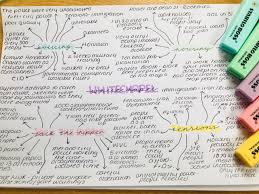SLT
Cards (9)
- what is SLT?Theory that behaviour is learned through observing others- imitating rewarded behaviours and avoiding punishable ones
- what are the 5 key aspects of SLT?
- modelling
- imitation
- identification
- vicarious reinforcement
- mediational processes
- what two types of model are there?
- live
- symbolic
- what three things determine the imitation of a behaviour?
- characteristics of the model
- observer's perceived ability to perform that behaviour
- observed consequences of that behaviour
- who studied the process of vicarious reinforcement?Bandura et al
- what are mediational processes?
- formation of mental representations of the behaviour displayed by the model
- assessment of the probability of different future outcomes as consequences of that behaviour
- individual might display learned behaviour if positive outcomes are more likely than negative ones
- describe research by Bandura et alPROCEDURE:
- kids (half to each condition) exposed to a non aggressive/aggressive adult with bobo doll
- aggressive model- physical and verbal aggression (eg- "POW!") . Following this, kids were frustrated at being shown toys they weren't allowed to play with, then taken to room with bobo doll
FINDINGS:- aggressive model = aggressive kids
- 1/3 who observed aggression were verbally aggressive, none of the non-aggressive condition kids were verbally aggressive
- follow up study, Bandura and Walters found kids who saw model rewarded for being aggressive were more likely to imitate behaviour
- evaluation of SLT?
- 😊 applications in understanding criminal behaviour- Akers- people who see criminals rewarded (exposure to criminal models) are more likely to carry out same behaviour (Sutherland's DAT)
- 😊 support for identification- Fox and Bailenson- computer generated model similar to the self results in more engagement in exercise in 24 hours than dissimilar model
- ☹️ behaviour is complex with influences from many sources- eg- SLT emphasises the importance of gender-specific modelling, ignores other factors like genetic predispositions, locus of control, which all interact with each other, can't determine identification with gender and therefore SLT as main causal influence
- 😊interaction between determinism and free will- implies behaviour is determined from environmental influenes, but we choose when to imitate observed behaviour based on consequences
- what 3 cognitive processes occur during mediational processing?
- attention- careful analysis of the action to be copied- committed to STM
- motivation- person considers own ability to perform same action- result of how much they identify with model + the perceived similarity
- retention-person then tries to remember the action so they can do the same as a result of being vicariously reinforced by model being rewarded
